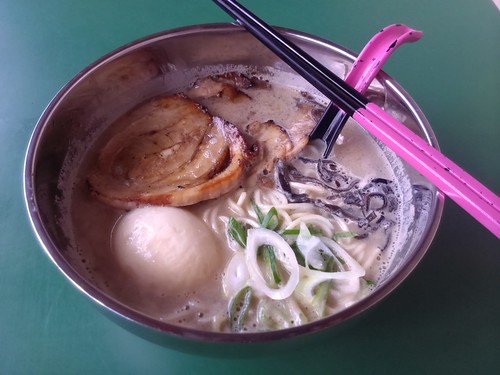If you’d like to receive daily updates about great heritage sites to visit in Ireland then please consider following us on Facebook, Twitter and Google+.
The remains of the monastic site at Killeshin really is one of Ireland's best hidden gems. It was originally founded in the sixth century by St. Dermot, but it was St. Comhdan who became the patron of the site.
Killeshin had a turbulent history with many accounts of raids by warring Irish tribes, particularly in the 11th century. It was plundered and demolished in 1041, and it is recorded that Diarmuid, son of Mael na mBó, was responsible. He was lord of the tribe known as the Ui Ceinnsealaigh who were mortal enemies of the Ui Bairrche tribe that held the lands around Killeshin. It is reputed that Diarmuid tore down or ‘broke’ the oratory on the site, killed over one hundred people and took hundreds more as slaves. More desecration was recorded in 1077, when the monastery was again raided and several yew trees were burned. This was a clear act of defiance and desecration as yew trees were often planted by monks to mark the sacred boundaries of monasteries.
The church that can be seen on the site today was built on the site of the broken oratory. It was built in the twelfth century, in the Romanesque architectural style. Killeshin is one of Ireland's finest examples of this style of architecture which features rounded arches and highly decorated doorways. At Killeshin, the doorway is absolutely magnificent. There are four arches around the doorway featuring carvings of chrevron, zig-zag, animal and foliage design. The capitals of the arches have human faces carved on them with different expressions and some even beards on their faces. Some suggest that use of shallow carvings and different colour stone indicates that this doorway was probably painted. There are also two inscriptions carved into the doorway. One inscription is for Cellachan - who may have been the master stone mason or artist on the site. The other inscription refers to Diarmuid Mac Murrough, the King of Leinster from around 1126 to 1171. He is the man that is credited with inviting the Normans into Ireland. It has been suggested that the boundary between the two warring tribes, the Ui Bairrche and Ui Chennselaigh, was incorporated into a new diocese in 1152, and this may have prompted Diarmuid as the King over the entire province to commission this masterpiece of Irish craftsmanship and continental design.
 The chancel of the church, where the altar would have stood, was probably built years after the nave and doorway. The windows that can be seen in the wall of the chancel are ogee headed and this style was used in around the 15th and 16th centuries. A round tower once stood to the north west of the church. This round tower was probably constructed in the tenth or eleventh century. Round Towers were important status symbols for monasteries and would have been used as bell towers and look outs. The round tower at Killeshin was unfortunately pulled down in 1703 by Captain Wolseley. It was said that a local farmer was afraid that masonry from the tower might fall on his cows. The stone from the round tower was used to build houses in the locality. A medieval baptismal font can still be seen outside the wonderful doorway.
The chancel of the church, where the altar would have stood, was probably built years after the nave and doorway. The windows that can be seen in the wall of the chancel are ogee headed and this style was used in around the 15th and 16th centuries. A round tower once stood to the north west of the church. This round tower was probably constructed in the tenth or eleventh century. Round Towers were important status symbols for monasteries and would have been used as bell towers and look outs. The round tower at Killeshin was unfortunately pulled down in 1703 by Captain Wolseley. It was said that a local farmer was afraid that masonry from the tower might fall on his cows. The stone from the round tower was used to build houses in the locality. A medieval baptismal font can still be seen outside the wonderful doorway.  |
| Baptismal Font |
When the Norman mercenaries came to Ireland to help Diarmuid Mac Murrough defeat his enemies, tracts of land throughout Leinster came into Norman ownership. When Diarmuid died shortly after the initial wave of Normans landed on the eastern shores of Ireland, their leader, Richard de Clare, became the Lord of Leinster and he granted the lands around Killeshin to a loyal knight named de Clahull. He constructed a motte-and-bailey, and later a castle, in a field across the road from the monastery at Killeshin. Today there is no visible trace of that castle, but a flat mound can still be made out in the field where the castle would have once stood. The monastery at Killeshin became a parish church after the Norman conquest and it survived the Reformation, continuing in use up until the nineteenth century.

Thank you for taking the time to read our blog, if you’d like to support us please consider downloading one of our acclaimed series of audioguides to Ireland’s heritage sites, they are packed with original music and sound effects and a really fun and immersive way of exploring Ireland’s past. They are available from abartaheritage.ie. Discover more about the story of Killeshin and the other incredibly atmospheric ancient churches and monasteries of County Laois by downloading the free audioguide The Laois Monastic Trail.
If you’d like to receive daily updates about great heritage sites then please consider following us on Facebook, Twitter and Google+.
If you’d like to receive daily updates about great heritage sites then please consider following us on Facebook, Twitter and Google+.
























